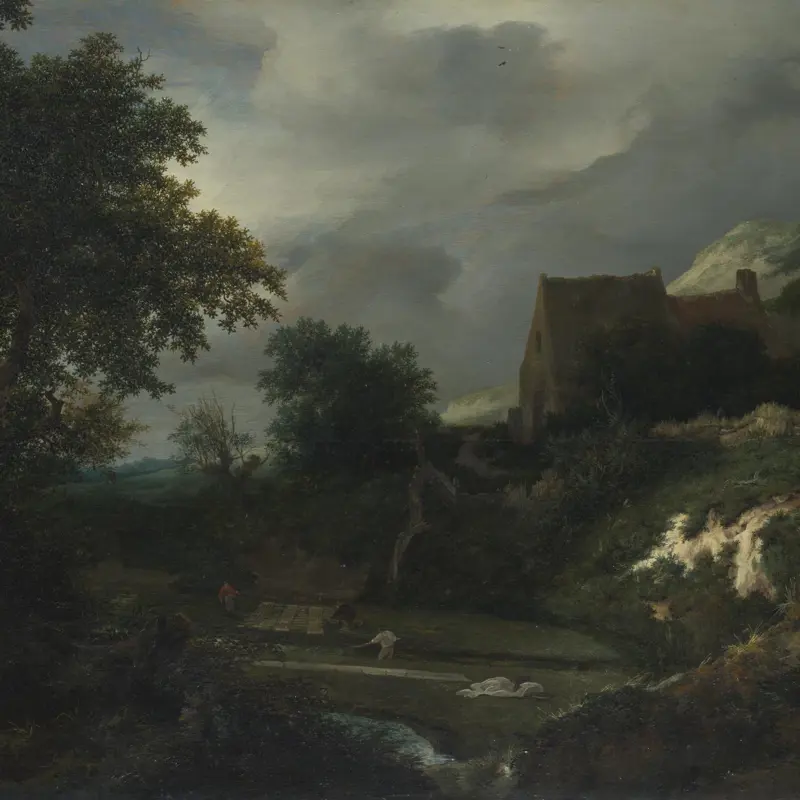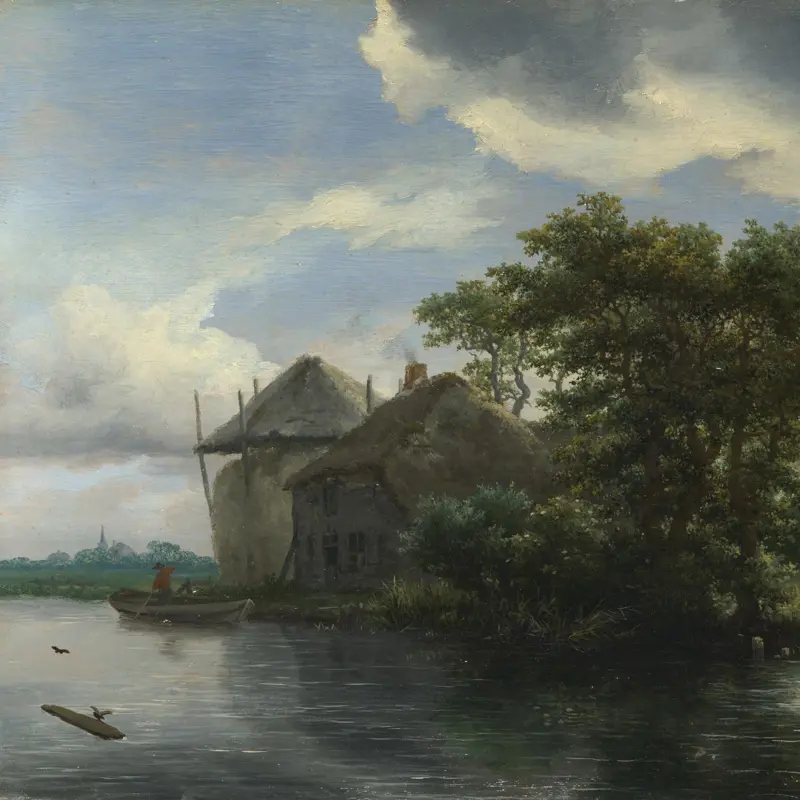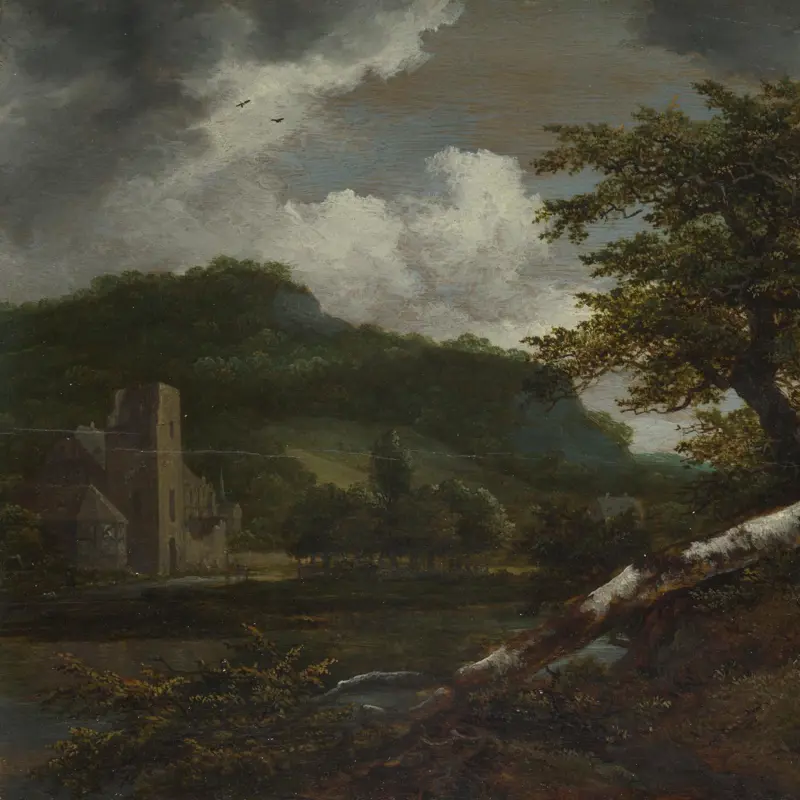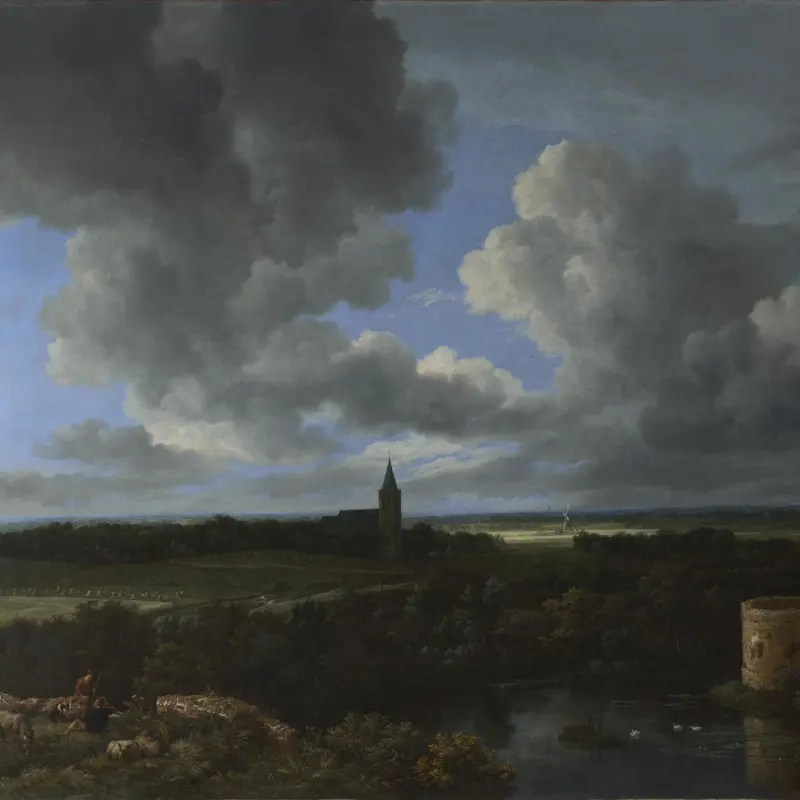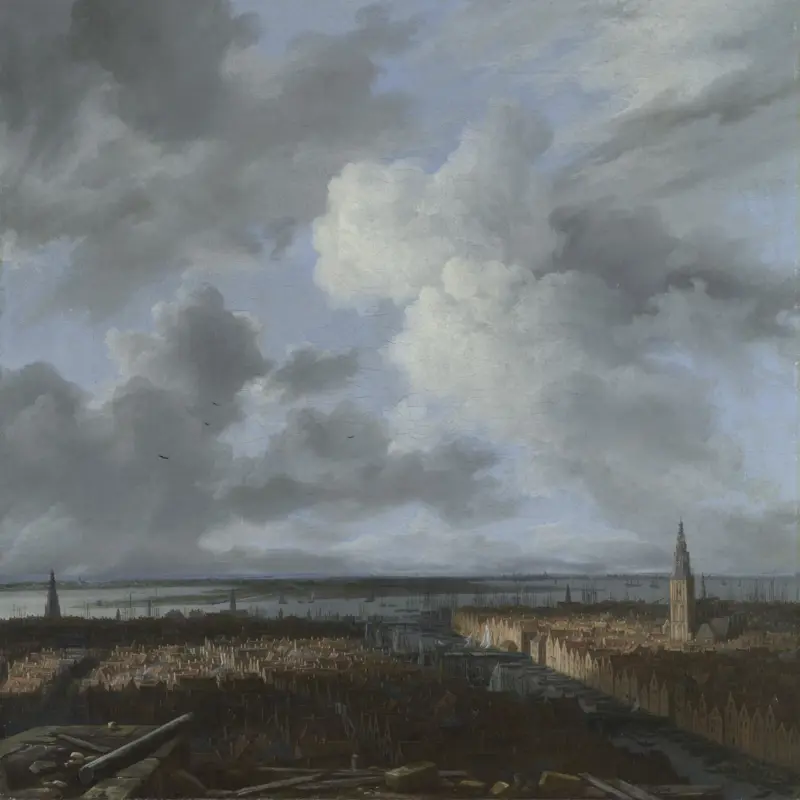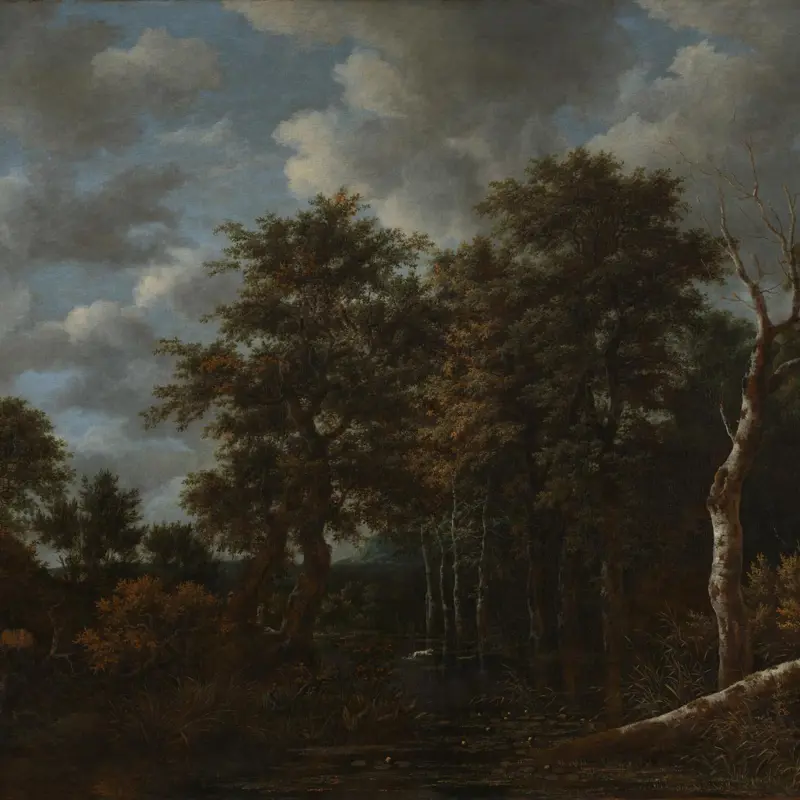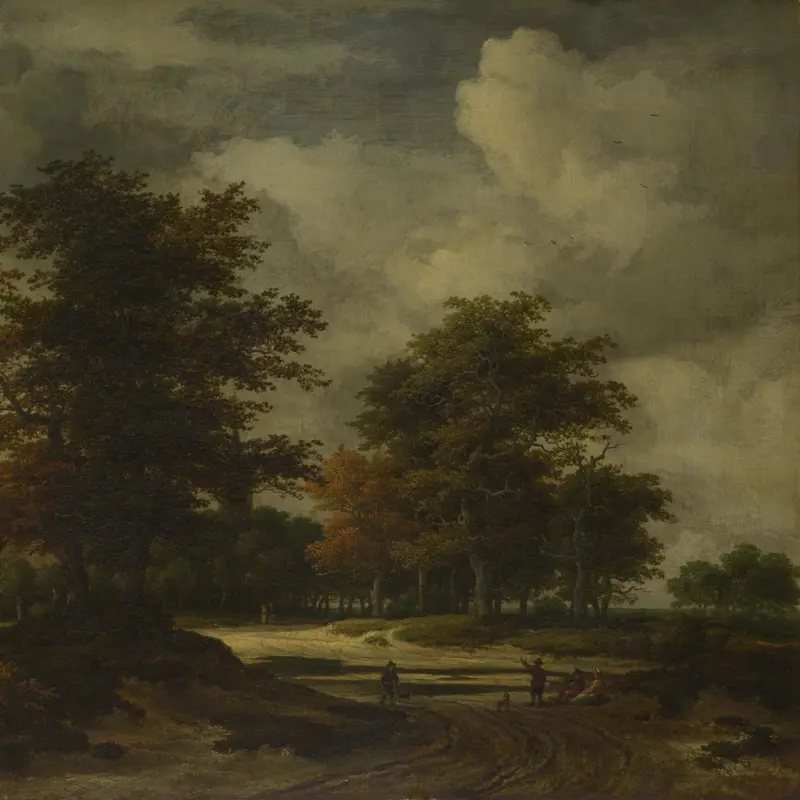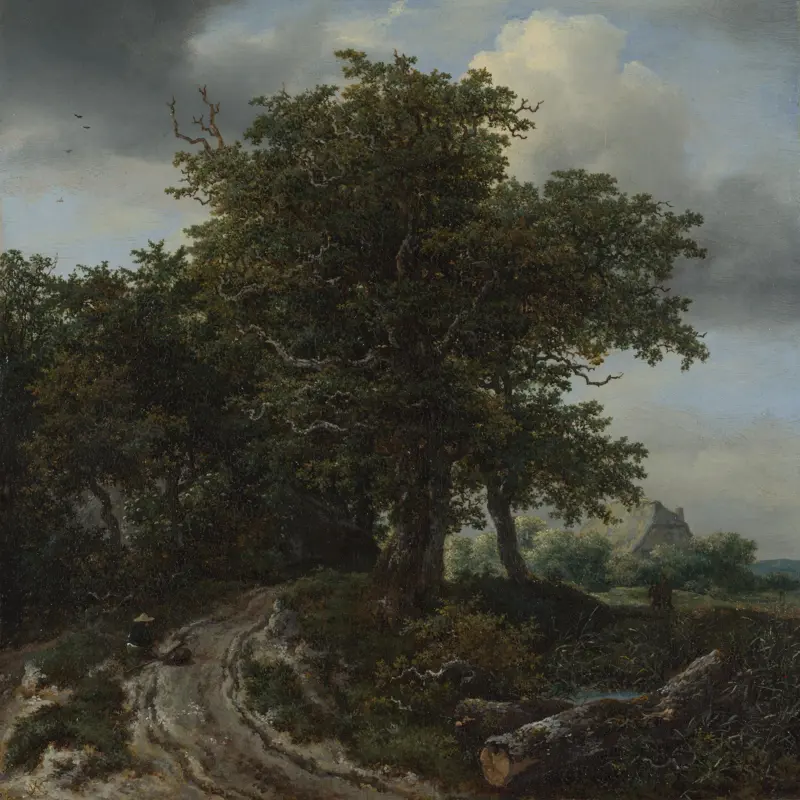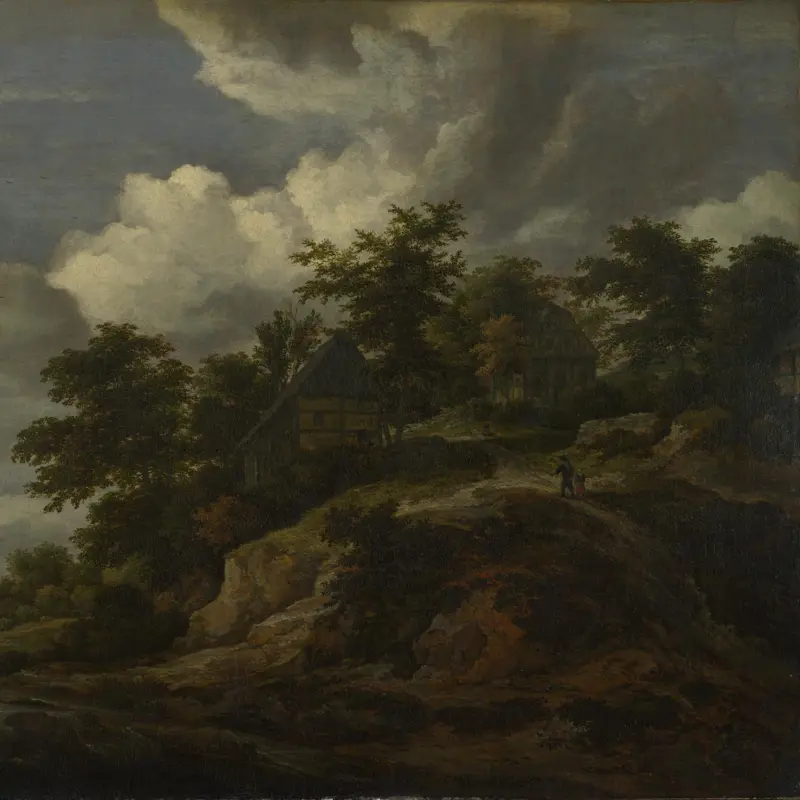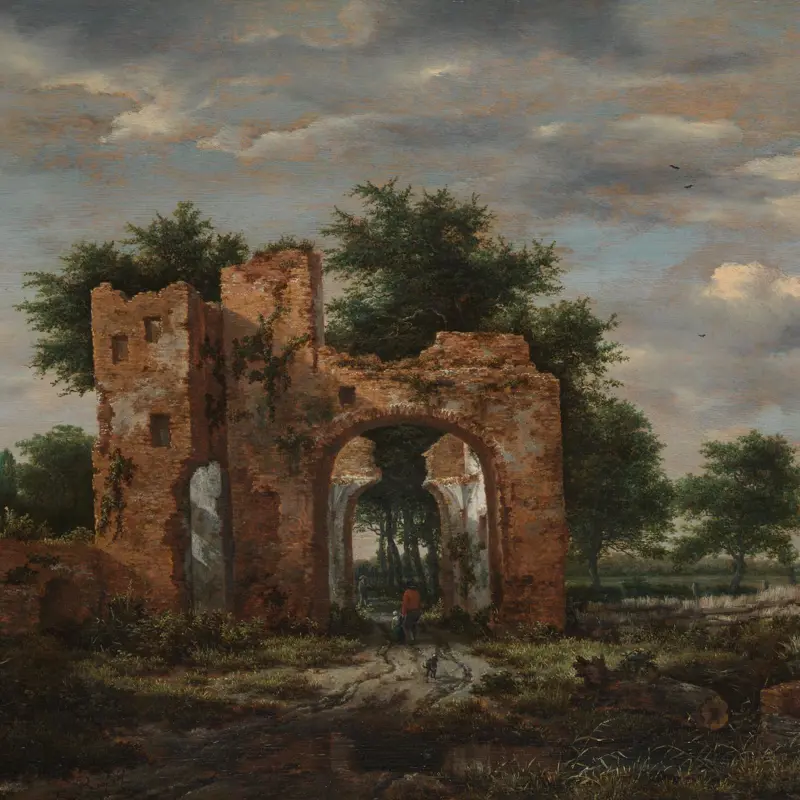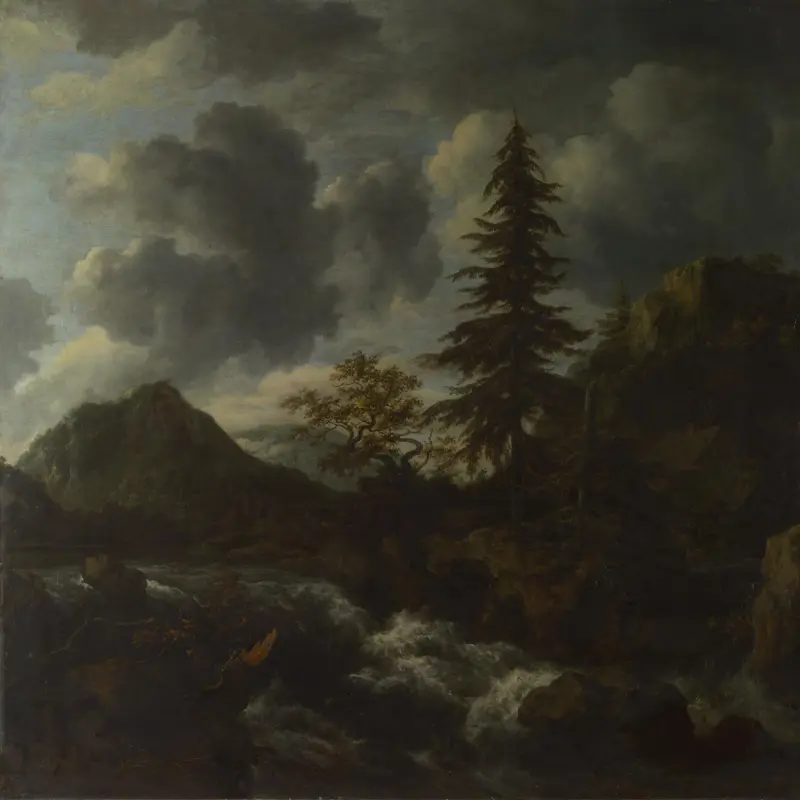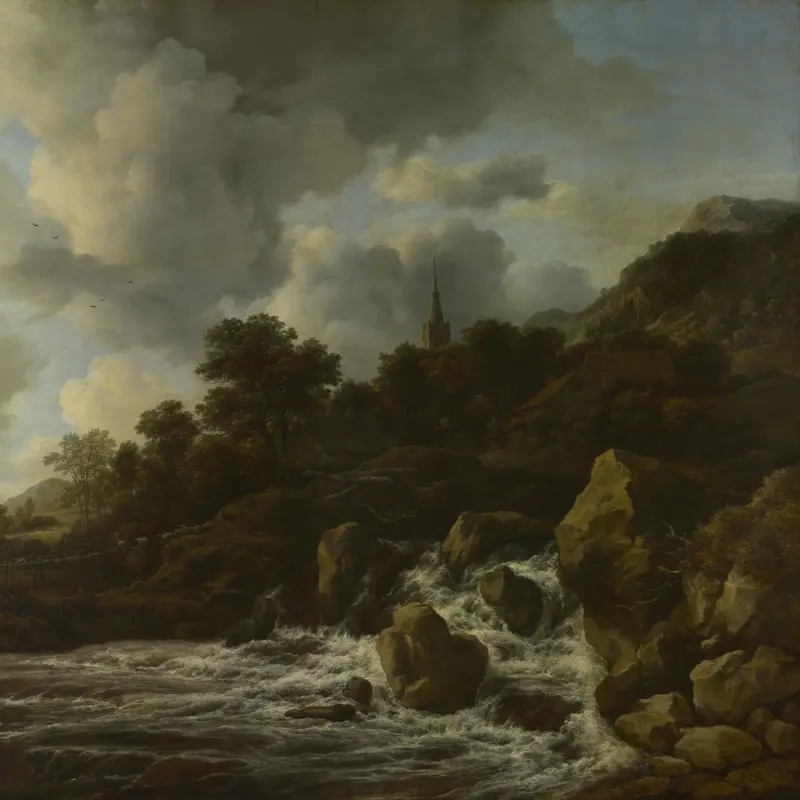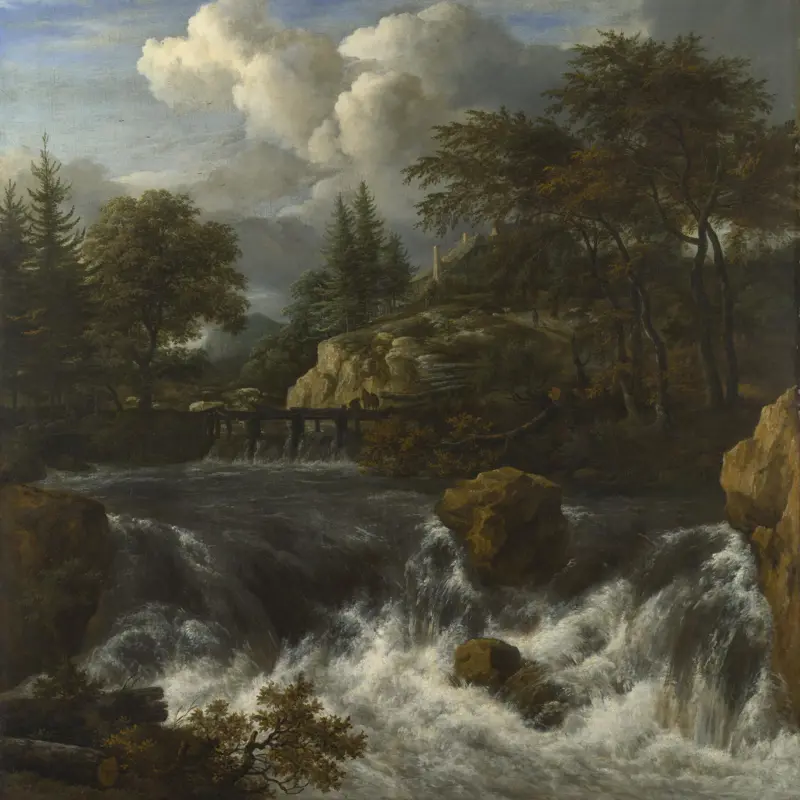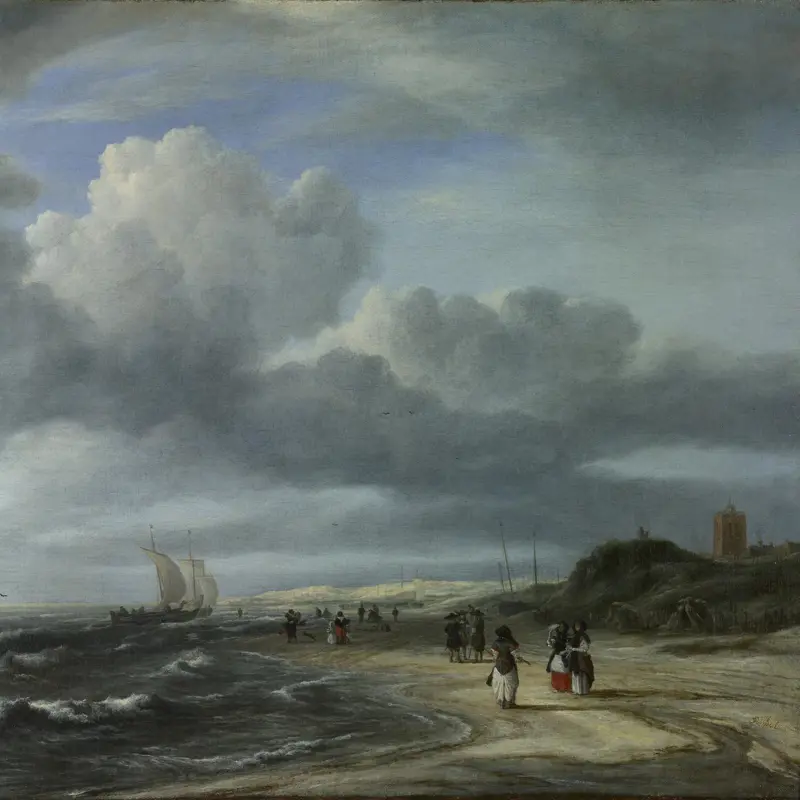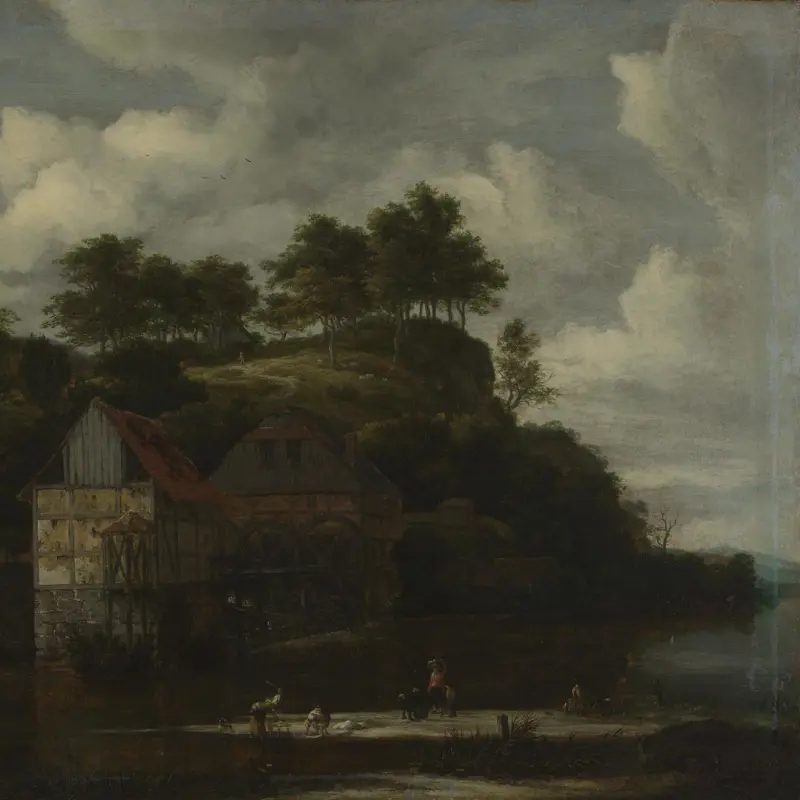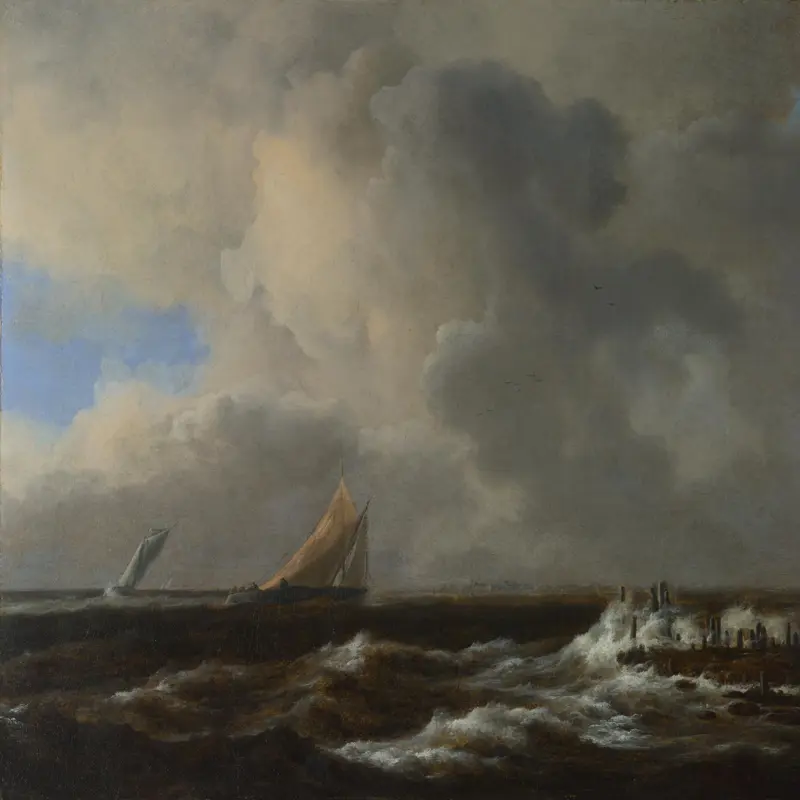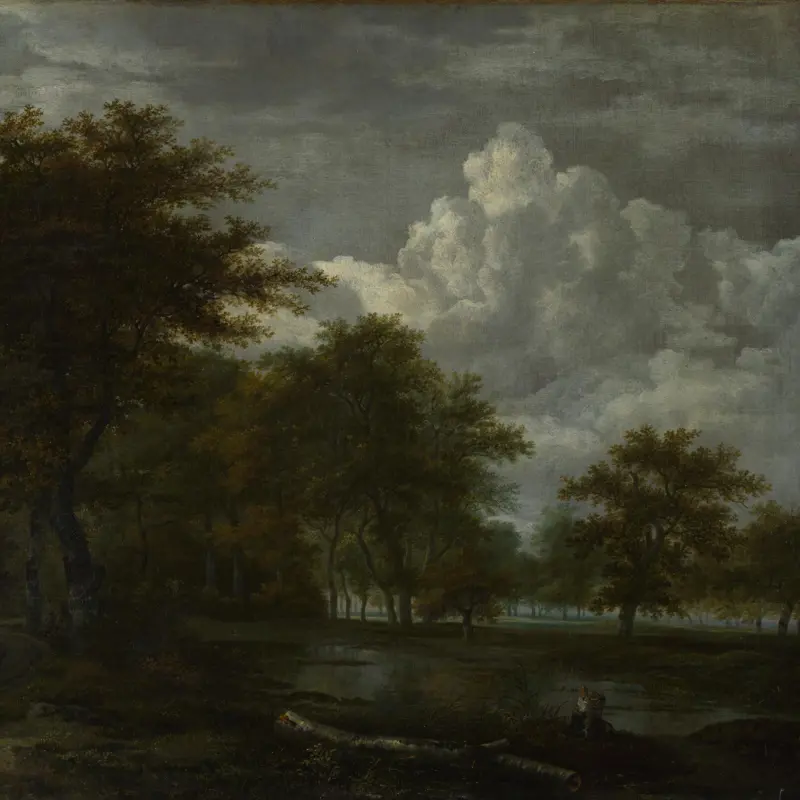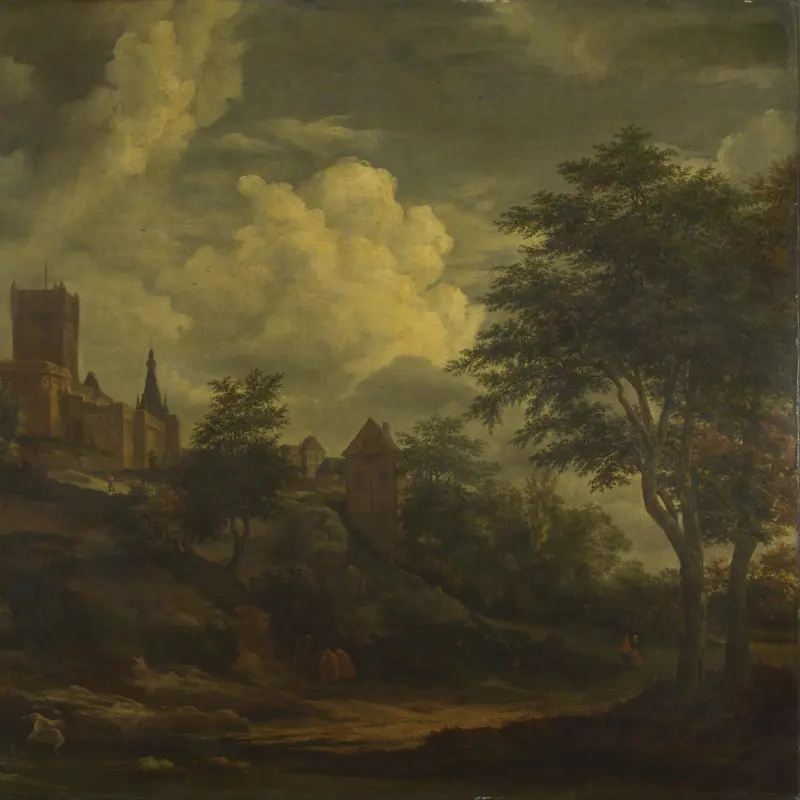Jacob van Ruisdael, 'Two Watermills and an Open Sluice at Singraven', about 1650-2
About the work
Overview
The wind seems to chase the clouds across this painting, letting through a fitful sun to light up the tumbling water for one moment. In another it will be gone, falling instead on the sheep on the steep hillside across the valley, perhaps, or the distant windmill and church steeple beyond. The man on the bridge of the sluice is about to close the gate to stop the water pouring through. He seems to pause, perhaps to summon his strength, perhaps just pondering the flickering light on the rushing torrent.
The setting of the mill is entirely van Ruisdael’s invention: there are no hills of the height he shows anywhere in Holland. He travelled quite widely, making sketches and drawings that he used imaginatively in his landscapes. He also used the drawings of Allart van Everdingen, who had been to Scandinavia and returned with mountainous views quite new and exciting in their rough grandeur.
Key facts
Details
- Full title
- Two Watermills and an Open Sluice at Singraven
- Artist
- Jacob van Ruisdael
- Artist dates
- 1628/9? - 1682
- Date made
- about 1650-2
- Medium and support
- oil on canvas
- Dimensions
- 87.3 × 111.5 cm
- Inscription summary
- Signed
- Acquisition credit
- Wynn Ellis Bequest, 1876
- Inventory number
- NG986
- Location
- Room 23
- Collection
- Main Collection
- Previous owners
- Frame
- 20th-century Replica Frame
Provenance
Additional information
Text extracted from the ‘Provenance’ section of the catalogue entry in Neil MacLaren, revised and expanded by Christopher Brown, ‘National Gallery Catalogues: The Dutch School: 1600–1900’, London 1991; for further information, see the full catalogue entry.
Bibliography
-
1829
J. Smith, A Catalogue Raisonné of the Works of the Most Eminent Dutch, Flemish, and French Painters: In Which is Included a Short Biographical Notice of the Artists, with a Copious Description of Their Principal Pictures […], 9 vols, London 1829-1842
-
1907C. Hofstede de Groot, Catalogue Raisonné of the Works of the Most Eminent Dutch Painters of the Seventeenth Century, 10 vols, London 1907
-
1907C. Hofstede de Groot, Catalogue Raisonné of the Works of the Most Eminent Dutch Painters of the Seventeenth Century, 10 vols, London 1907
-
1960Maclaren, Neil, National Gallery Catalogues: The Dutch School, 2 vols, London 1960
-
1980J. Giltay, 'De tekeningen van Jacob van Ruisdael', Oud Holland, XCIV, 1980
-
1981S. Slive and H.R. Hoetink, Jacob van Ruisdael (exh. cat. Mauritshuis, 1 October 1981 - 3 January 1982; Fogg Art Museum, 18 January 1982 - 11 April 1982), New York 1981
-
1991Maclaren, Neil, revised by Christopher Brown, National Gallery Catalogues: The Dutch School, 1600-1900, 2nd edn (revised and expanded), 2 vols, London 1991
-
2001
C. Baker and T. Henry, The National Gallery: Complete Illustrated Catalogue, London 2001
About this record
If you know more about this work or have spotted an error, please contact us. Please note that exhibition histories are listed from 2009 onwards. Bibliographies may not be complete; more comprehensive information is available in the National Gallery Library.

